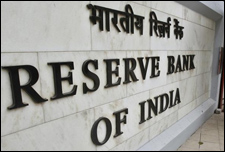 Non performing assets of the banks, both public and private sector, are growing which ultimately may impact the bottomline of these banks. Also, if the trend continues, it may force RBI to come out with new and stricter lending norms for banks.
Non performing assets of the banks, both public and private sector, are growing which ultimately may impact the bottomline of these banks. Also, if the trend continues, it may force RBI to come out with new and stricter lending norms for banks.
At the end of the first quarter of the current fiscal gross NPA ratio of all banks stood at 3.85% as against 3.42% at the end of March 2013. Thus, growth in NPA level of commercial banks which has been increasing during last three years, has persisted during the current year too. When compared to public sector banks, private sector banks are more efficient and have lesser NPA ratio. Among private sector banks, new private sector banks like Indusind Bank and HDFC Bank are more efficient in maintaining their NPA ratio at reasonable level. Also in case of new private sector banks there is declining trend in NPAs. For example, ICICI Bank whose gross NPA stood at 5.8% as at the end of March 2011 has brought it down to 3.97% by the end of first quarter of this fiscal.
| Particulars |
March end 2011
|
March end 2012
|
March end 2013
|
June end 2013
|
| Nationalized Banks |
1.99
|
2.67
|
3.42
|
3.89
|
| SBI Group |
3.12
|
4.36
|
4.80
|
5.50
|
| All PSBs |
2.32
|
3.17
|
3.84
|
4.39
|
| Old private sector banks |
1.97
|
1.80
|
1.91
|
2.28
|
| New private sector banks |
2.62
|
2.18
|
1.91
|
1.94
|
| All banks |
2.36
|
2.94
|
3.42
|
3.85
|
India’s largest bank, State Bank of India with NPA ratio of 6.01% has the highest NPA among all the banks. Allahabad Bank, Central Bank of India , UCO Bank and State Bank of Mysore are the other banks among Public Sector banks who have NPAs above 5% as at the end of June 2013. Among private sector banks Dhnalaxmi Bank and Lakshmi Vilas Bank have NPAs above 5%.











